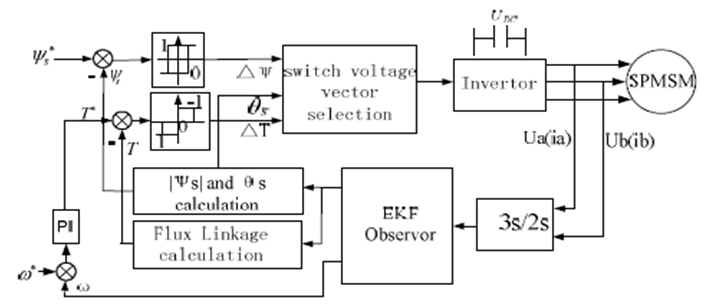A
Novel Three-Phase Three-Leg AC/AC Converter Using Nine IGBTs
ABSTRACT:
This
paper proposes a novel three-phase nine-switch ac/ac converter topology. This
converter features sinusoidal inputs and outputs, unity input power factor, and
more importantly, low manufacturing cost due to its reduced number of active
switches. The operating principle of the converter is elaborated; its
modulation schemes are discussed. Simulated semiconductor loss analysis and
comparison with the back-to-back two-level voltage source converter are
presented. Finally, experimental results from a 5-kVA prototype system are
provided to verify the validity of the proposed topology.
KEYWORDS:
1. AC/AC
converter
2. pulse width modulation (PWM)
3. reduced
switch count topology
SOFTWARE: MATLAB/SIMULINK
CIRCUIT DIAGRAM:
Fig: 1 B2B
2L-VSC.
CONCLUSION:
A novel nine-switch
PWMac/ac converter topology was proposed in this paper. The topology uses only
nine IGBT devices for ac to ac conversion through a quasi dc-link circuit.
Compared with the conventional back-to-back PWM VSC using 12 switches and the
matrix converter that uses 18, the number of switches in the proposed converter
is reduced by 33% and 50%, respectively. The proposed converter features
sinusoidal inputs and outputs, unity input power factor, and low manufacturing cost.
The operating principle of the converter was elaborated, and modulation schemes
for constant and VF operations were developed. Simulation results including a
semiconductor loss analysis and comparison were provided, which reveal that the
proposed converter, while working in CF mode, has an overall higher efficiency
than the B2B 2L-VSC at the expense of uneven loss distribution. However, the
VF-mode version requires IGBT devices with higher ratings and dissipates
significantly higher losses, and thus, is not as attractive as its counterpart.
Experimental verification is carried out on a 5-kVA prototype system.
REFERENCES:
[1]
B. Wu, High-power Converters and AC Drives. Piscataway, NJ: IEEE/Wiley, 2006.
[2]
B. Singh, B. N. Singh, A. Chandra, K. Al-Haddad, A. Pandey, and D. P. Kothari,
“A review of three-phase improved power quality AC– DC converters,” IEEE Trans.
Ind. Electron., vol. 51, no. 3, pp. 641–660, Jun. 2004.
[3]
F. Blaabjerg, S. Freysson, H. H. Hansen, and S. Hansen, “A new optimized space-vector
modulation strategy for a component-minimized Voltage source inverter,” IEEE
Trans. Power Electron., vol. 12, no. 4, pp. 704–714, Jul. 1997.
[4]
R. L. A. Ribeiro, C. B. Jacobina, E. R. C. da Silva, and A. M. N. Lima, “AC/AC
converter with four switch three phase structures,” in Proc. IEEE PESC, 1996,
vol. 1, pp. 134–139.






